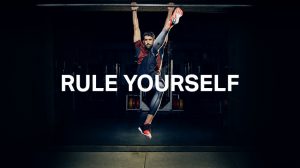In the second part of this post, I discuss the intent behind the controversial Rule 40 and the reasons for its amendment prior to the Rio Games. I also discuss how Under Armour is one of the first few companies which will benefit from the changes to the new rule. Finally, I will discuss India’s stance on Rule 40. Read on for more.
Intent of Rule 40
Rule 40 was initially put in place to protect the ‘amateur’ status of the athletes, prevent over-commercialisation and maintain the focus on an athlete’s performance. Primarily, it was a way to protect official sponsors who have paid millions of dollars to obtain exclusive sponsorship in their category. Without official sponsors, the IOC and host nation will earn little revenue, resulting in the Olympic Games becoming unviable, and there being limited commercial incentive to play sport.
During and after London 2012, a number of US and British athletes campaigned against Rule 40 under the hash tag #WeDemandChange2012. They argued that while the athletes don’t get paid anything for participating at the Olympics, the host nation and the IOC make millions. Becoming an Olympic-level athlete takes years of hard work and a lot of financial support. It is only fair that when the spotlight is on the athletes their personal sponsors, who supported them throughout the journey, are also rewarded. A change would also encourage other sponsors to come forward and provide financial aid to individual athletes.
Since Rule 40 applies to the athletes, the sanctions for violation apply to the athletes rather than the advertisers. Sanctions may range from fines to disqualification resulting in loss of medals. In 2012, Michael Phelps (for Louis Vuitton) and Yohan Blake (for his Mille watch) found themselves in breach of Rule 40. Michael Phelps risked losing all his medals. However, no action was taken against either of them. To exonerate themselves from liability, Michael Phelps claimed the leak was unauthorised and Louis Vuitton claimed the pictures had been stolen. Yohan Blake too faced no consequences for wearing a rival sponsor’s logo even though Omega was the official sponsor to the Games. Think of Rule 40 as more of a protectionist paper tiger. It is used to intimidate and create fear and has the potential to cause a real bite if the IOC decides to maximize its full potential.
Criticism
Even though the changes to Rule 40 will benefit the athletes, not everyone is pleased with them, especially the official sponsors of the Games. McDonalds has categorically stated that they may look to renegotiate the terms of their agreement for future Games if Rule 40 impacts their rights adversely. They are not wrong. More brands on display around the Games will definitely confuse consumers and blur the lines between official and personal sponsors of the athletes. This will make official sponsorship less valuable and potentially result in loss of revenue for the Olympics.
Others have said that the new Rule 40 protects the rights of personal sponsors of already famous athletes, backed by large corporate houses, and is not ideal for a small business or for a majority of the first time Olympians. Going by the US and British guidelines, one had to have submitted their proposal way back in January, when hardly anyone had qualified for the Games. The campaign had to have commenced prior to March and would have to continue till the end of the Olympic Games in August. This makes it a very expensive campaign for anyone other than a large corporate house, which is sponsoring a number of athletes.
Rule 40 also seems to be a rule put in place to serve already famous and well-heeled athletes, who already have large sponsors backing them, i.e., the ones with the greatest negotiating power and commercial leverage. It doesn’t however work so well for lower profile athletes. The qualification cut-offs for most of the events ended as late as July whereas the athletes were required to have made waiver applications under Rule 40 as early as January. This leaves a number of athletes, especially the ones who need sponsorship the most, in the lurch.
Under Armour takes the advantage
It will be interesting to see how the implementation of the new Rule 40 plays out in Rio. Under Armour, which sponsors Michael Phelps, Andy Murray, along with 250 (two hundred and fifty) other Olympians, is one of the advertisers that will benefit from the Rule 40 exemption.
Under the amended Rule, Under Armour will be able to run existing campaigns, using athletes such as Michael Phelps, as long as the advertisement does not create any impression of a commercial connection with the Olympic Games and any Olympic property. Under Armour’s latest campaign, featuring Michael Phelps in “The Last Goodbye”, is an excellent example on how to correctly use the new Rule 40.
Even though Under Armour will not be able to send congratulatory messages to the athletes they sponsor or make any express allusion to the Games, they will be able to use the images of the athletes they sponsor, thereby creating a link between themselves and athletes at the Olympics. Using the Michael Phelps ad campaign during high profile swimming events as he wins his medals will definitely help in creating a lot of mileage for their brand around the world.
As part of their marketing strategy, Under Armour also intends to rent a series of outdoor gyms in Rio to set up marketing outposts and host workouts for fans during the Games. This raises questions on the limits of the Rule 40 amendment. Can non-sponsors like Under Armour also run generic campaigns around the Olympic stadium or is the new right only limited to conventional, digital and social media advertising? Running campaigns around the Olympic arena runs the risk of falling foul with ambush marketing regulations and further undermines the rights of official sponsors. It will be interesting to see how much leeway the IOC is willing to give non-sponsors like Under Armour.
India and Rule 40
The Indian NOC has been completely silent on the Rule 40 exemption leaving their stance on Rule 40 in doubt. Judging by our proximity to the Games now, it is probably too late. In fact the Indian Olympic Association (“IOA”) website makes no mention of Rule 40.
It is unclear whether personal sponsors of more well known Indian athletes such as Sania Mirza and Saina Nehwal are aware of Rule 40 and the limitations it imposes on them. I haven’t come across any case where Indian athletes have applied for a Rule 40 waiver on behalf of their sponsors. Edelweiss Group has been named as the principal sponsor of the Indian contingent to the Olympics. They have released an online video supporting the Olympic athletes and have planned a campaign, which involves sending out emails and brochures, etc. With the IOA’s ambiguous stance, it is unclear whether the IOA or IOC has actually approved any of these campaigns. If not, it is the athlete who will face the brunt rather than the advertisers.
It is not as if India has never had to deal with laws similar to Rule 40 before. During major cricketing tournaments such as the ICC Cricket World Cup, the ICC too imposes similar restrictions on Indian cricketers. During the blackout period for the World Cup, cricketers are allowed to appear in any advertisement or commercial activity only in cricket whites or generic unbranded clothing. They are not allowed to appear in the national colours of their team. Their sponsors are not allowed to make any direct or implied association with the event or use any of the ICC marks or logos. Cricketers are also not allowed to display any branding or marks of any third party apart from an approved manufacturer or team sponsor while playing.
As we move forward we will need some clarity from the Indian Olympic Association. There is talk of Rome’s bid for the 2024 Olympics and a push for cricket to be included in the Games. If that does come to fruition Rule 40 will become even more relevant for India and will have a huge impact, given the amount of money that rides on Indian cricketers.
Things are about to get murkier and more convoluted in the Rule 40 world but we have Rio to see how it all plays out.



A very interesting and informative read. Would love a follow-up after the games to see how the amendments play out.
Many thanks for your kind comments Shantanu. Will certainly work on a follow up, post the games.